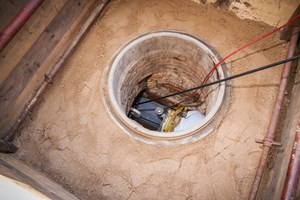Swift completion of New Orleans sewer repairs ends release of raw sewage into Mississippi River
(UI) — The New Orleans Sewerage & Water Board has successfully ceased the discharge of untreated sewage into the Mississippi River after accomplishing vital repairs to a 60-year-old, 60-inch sewer force main situated in the St. Roch neighborhood, The Advocate reported.
The utilization of a temporary bypass line to divert sewage into the river, which aimed to prevent residential and commercial backups as well as pipe leakage, has now been replaced by the restoration of regular sewage flow through the Station D Sewer Force Main located at 2800 Florida Avenue. This restored flow directs the sewage towards treatment at the Eastbank Wastewater Treatment Plant.
The repair process spanned 36 days and faced additional complexity due to the discovery of a second break in the main after the initial repair. Workers were tasked with excavating a 15-foot-deep pit beneath the pipe breaks and installing 25-foot sheet piles as supportive structures. Subsequently, metal patches were applied to seal the holes at the pipe's base.
Throughout the repair period, approximately 150 cubic feet per second of wastewater were being discharged into the river, intermixing with the river's normal flow rate of about 260,000 feet per second, which is lower than usual for this year. Authorities from downstream water departments in St. Bernard and Plaquemines parishes have reported no indications of water contamination.
Remarkably, the repairs concluded on Friday, nearly eight days ahead of the projected schedule. Monitoring efforts continued over the weekend to ensure the absence of any additional breaks.
Ghassan Korban, the Executive Director of the SWB, highlighted the challenges associated with the aging sewer force main, noting that further leaks emerged subsequent to the initial repair. In a statement to The Advocate, Korban commended the dedicated and efficient work of the crews in accomplishing the repair ahead of schedule.
The damaged section of the pipe, located in a vertical bend of the system and featuring multiple connections to other pipes, will be replaced within the next 18 months, as part of a broader project. This replacement will involve the installation of a separate bypass pipe, diverting sewage to specific sections of the system leading to the treatment plant. Consequently, there will no longer be a need for sewage disposal into the river.
Related News
From Archive

- Glenfarne Alaska LNG targets late-2026 construction start for 807-mile pipeline project
- U.S. water reuse boom to fuel $47 billion in infrastructure spending through 2035
- $2.3 billion approved to construct 236-mile Texas-to-Gulf gas pipeline
- Major water pipe break in Puerto Rico hits over 165,000 customers
- Potomac River Tunnel project enters construction phase beneath Washington, D.C.
- Pennsylvania American Water launches interactive map to identify, replace lead water service lines
- Trump's tariffs drive $33 million cost increase for Cincinnati sewer project
- Utah city launches historic $70 million tunnel project using box jacking under active rail line
- Tulsa residents warned after sewer lines damaged by boring work
- Fatal trench collapse halts sewer construction in Massachusetts; two workers hospitalized




Comments